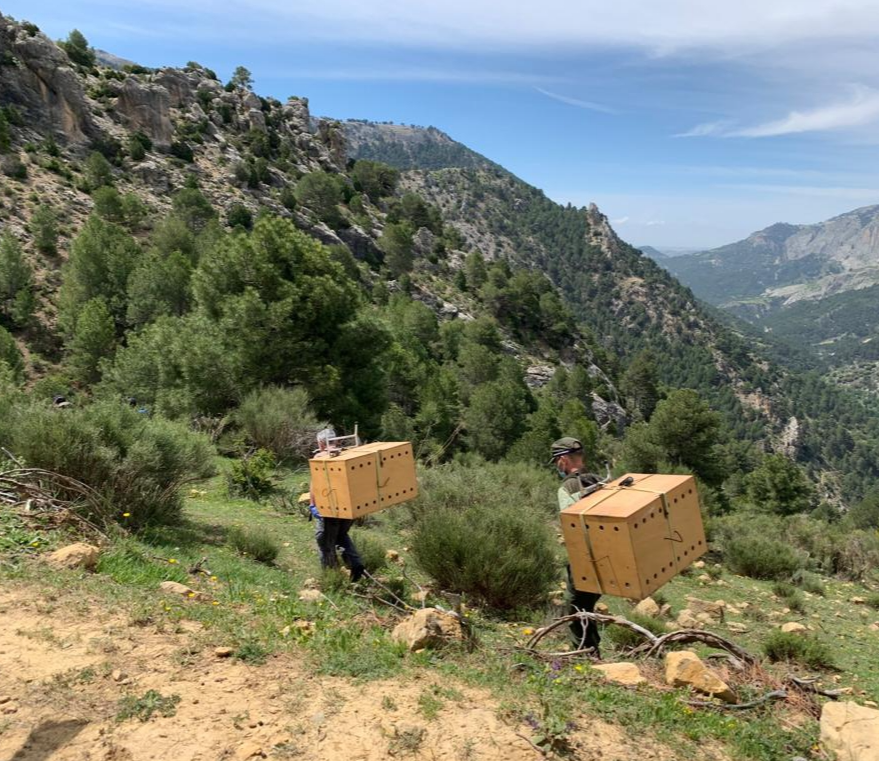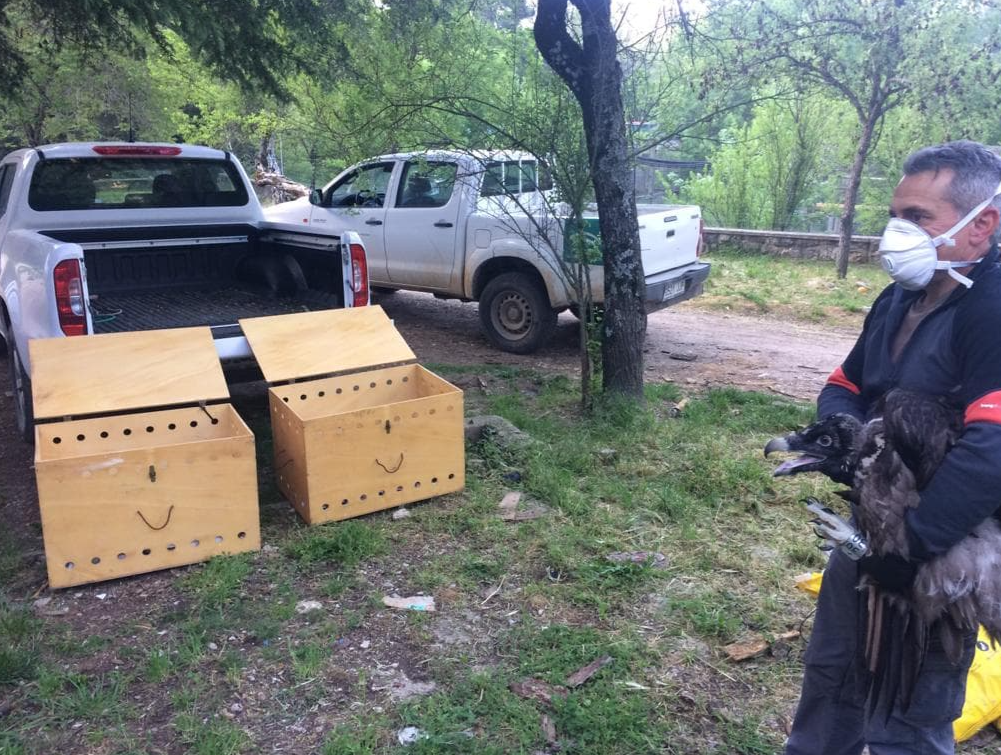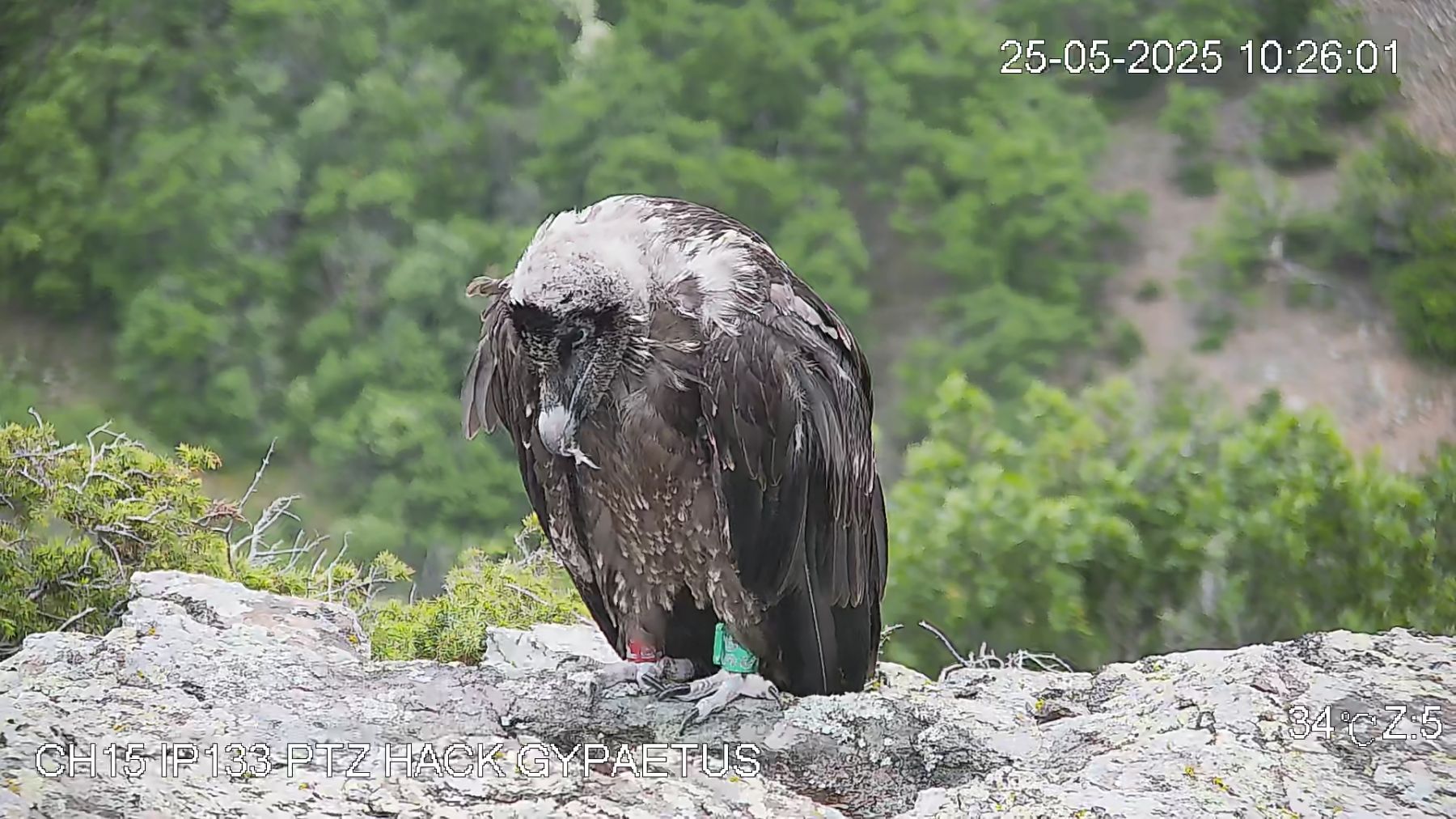
It’s that time of the year again when the Vulture Conservation Foundation (VCF) together with partners release captive-bred Bearded Vulture chicks into the wild to reintroduce or reinforce the wild populations of the species! This year presented us more challenges than usual due to the global pandemic, but we adapted to the restrictions by developing emergency protocols and taking additional measures to save chicks to make sure that they could be released in the wild.
In 2019, we released 22 young captive-bred Bearded Vultures into the wild in six different locations across Spain and France, which was a record number of released birds. This year, there are 25 Bearded Vulture chicks alive and healthy within our Bearded Vulture Captive Breeding Network (EEP), but surprisingly the hatching season is not over yet. Some pairs laid clutches much later compared to previous years, and there is still one egg remaining at the Richard Faust Bearded Vulture Specialised Captive Breeding Centre in Austria expected to hatch around 11 May. For the 2020 release season, we are foreseeing the release of 21 birds across six regions in Spain, France and the Alps, which will be transferred by planes or carriers.
The formal launch of the Bearded Vulture release season in Andalusia
The 2020 Bearded Vulture release season began in Andalusia this year, as part of our collaborative reintroduction project there, led by Junta de Andalucía. On Saturday 9 May, two young birds coming from a captive-breeding background were released in Parque Natural de la Sierra de Castril. The vultures were placed in the hacking site where they will be monitored and fed without any human contact until they fledge the nest and take their first flight to freedom. Usually, these releases attract many members of the public, but due to the COVID-19 restrictions and taking the appropriate safety measures, there will be no ceremonies this season. But, we will definitely share as much as we can from the releases to present the young vultures and their new homes.
Who are the Bearded Vultures released?
The birds released hatched at the Bearded Vulture Captive Breeding Centre of Guadalentín, which houses 27 Bearded Vultures and is the largest facility of its kind within our Bearded Vulture (EEP). Another crucial component of the Centre is that it specializes in double adoptions and raising chicks coming from other centres and zoos within the network, therefore facilitating the natural rearing of young vultures. The VCF recently assumed the management of the Centre in the beginning of 2020 on a two-year contract from the Junta de Andalucía.
The oldest bird released is Bwindi (BG1053 and temporarily baptized Kobe) that was the first captive Bearded Vulture to hatch this year in the Centre and in Europe. The young vulture hatched naturally in Guadalentín on 30 January, weighing 139,1g and was in perfect health, and was 100 days old during his release.

The other vulture released is Leo (BG1054 and temporarily baptized Nieto) who was the second chick to hatch this year at the Centre. It hatched naturally on 5 February at 15:52, weighing 127.2g. On the day of the release, the bird was 94 days old.

Bwindi and Leo are brothers — their parents are Joseph and Keno, who are 100% of Asian descent. The male is the father of the first chick ever that hatched in Guadalentín in 2002.
This year we are releasing a minimum of 8 birds in the Andalusia reintroduction project. The first release on Saturday 9 May will be followed by three more releases anticipated to take place in May, June and July. Two individuals that hatched from the VCF managed centre in Vallcalent, Lleida, will also be released in Andalusia’s wild this season. Furthermore, three chicks that hatched in Guadalentín will be released in the Swiss Alps (2) and in the Natural Park of Vercors in France (1).
Bearded Vulture reintroduction in Andalusia
Bearded Vultures went extinct in Andalusia in 1986 mainly due to direct persecution, wildlife poisoning and human disturbance at the nesting sites. To bring them back, Junta de Andalucía, and us here at the Vulture Conservation Foundation (VCF) started a reintroduction project in 1996, and the former Fundación Gypaetus was also created to manage the project. Since the first releases in 2006 and with the release of eight individuals this year, 71 Bearded Vultures will be released in Andalusia by July this year in the provinces of Jaén and Granada. Thanks to tackling threats and releasing birds, the population of the species is gradually increasing. There are currently three Bearded Vulture pairs and 43 confirmed individuals in Andalusia. Hopefully, the chick that hatched in the wild this season will survive and also stay in the region.
Stay tuned with the releases by following #BeardedVultureReleaseSeason on Facebook, Twitter, LinkedIn and Instagram!










